Zahava Elenberg’s creative vision for Covid-era workplaces
Her visionary fingerprints are all over Melbourne’s skyline. Now Zahava Elenberg has turned her creative eye to a Covid-era world.
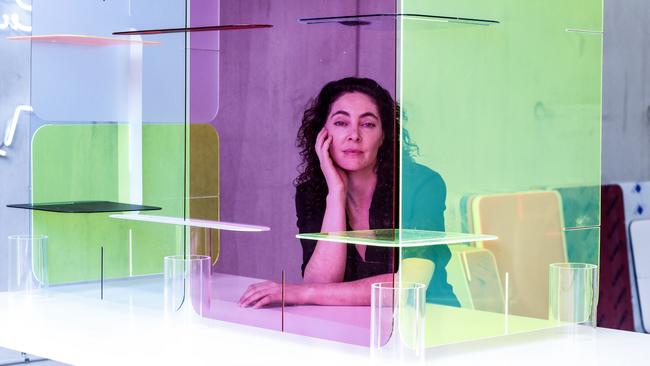
Zahava Elenberg made quite an impression in her first few months at Melbourne’s RMIT University. She never missed a tutorial, threw herself into philosophical discussions of cultural urbanism and built environments, and delivered projects well above the standard expected of a freshman architecture student. But at the end of the first semester, Elenberg’s tutor confronted her with a problem. “I’m having trouble marking you because I can’t find you on the enrolment list,” the teacher said to the then 17-year-old. The jig was up.
Although Elenberg had applied to do a degree in architecture at RMIT, she missed out on a place and was instead accepted into an arts degree at the nearby University of Melbourne. But she decided to attend the architecture classes anyway, hiding in plain sight in the front row. Even after being rumbled, she didn’t give up. “I begged the enrolment officer to let me in, I knocked on her door so many times that eventually, some months later, she gave in and offered me a place,” she recalls.
That a rebellious streak pulses through Elenberg’s veins isn’t surprising. She proudly recalls how her late father, artist Joel Elenberg, once bought a lab coat and snuck into an autopsy being conducted on campus at the University of Melbourne because he wanted to understand biology. Her mother, the formidable gallerist Anna Schwartz, made her name passionately challenging society’s view of art. “I’ve always had anarchic role models in my life,” says the 47-year-old, pushing a trademark family curl away from her face.
In hindsight, Elenberg’s chutzpah proved a masterstroke for her and her alma mater. Before she had even graduated she’d established her own practice with fellow student Callum Fraser after the pair won a competition to design the Liberty Tower, a $50m skyscraper. Almost 20 years on, with a string of awards to her name, the perforated aluminium and industrial mesh monolith that kickstarted her career still stands like a beacon on the edge of the Melbourne city skyline and is widely credited with transforming the “Gdansk” end of Melbourne’s otherwise chic Collins Street. “Zahava was always going to make her mark,” says property developer and publisher Morry Schwartz, who entrusted his stepdaughter to deliver the landmark project. “That building was absolutely transformative. When I got the site, Collins Street actually ended there and across the road was derelict wharf buildings and rusting old iron and it took a leap of imagination to do something special but they did. I still think it’s one of the most elegant buildings in town.”
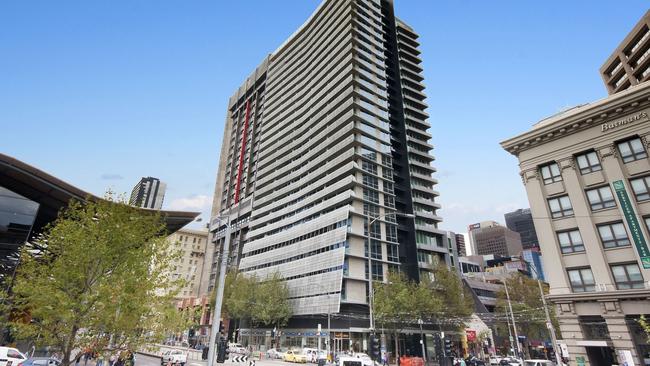
It’s a grey midwinter morning in Melbourne’s Fitzroy and bohemian Smith Street is empty, all the life sucked out of it by Covid-19. From the street the designer’s prefab concrete studio is largely unremarkable, but inside carefully cut slivers of neon Perspex bounce colour around the room, cosying the stark industrial space. “Out of disaster should come joy,” Elenberg says of her latest project, Clikclax, a clever system of colourful Perspex shapes that neatly slot together, creating socially distant spaces. The idea came as late-night inspiration during Melbourne’s first lockdown. “I knew we needed to bring people together and interact as humans again but somehow keep us safely apart,” she explains, “something that was inspiring and didn’t completely shut down a space and add to the sense of isolation.”
Less than three weeks after the idea first came to her, and after she’d spent nights hand-cutting cardboard patterns and prototypes on her living room floor, she launched the product in the hope that it would gently divide offices, bars, shops and homes all around the world in a way that makes us forget why we need to be separated in the first place. “It’s like desk jewellery,” she says. “It’s pretty and I hope it makes us feel good. Good ideas are born in a crisis. I remember Mum saying to me as a kid, ‘There are leaders and there are followers; you need to do things in a different way, to test yourself and push yourself down a path that you might not have gone down before.’ This felt right to me, it was fun and I figured if it felt right to me, then it would to others too.”
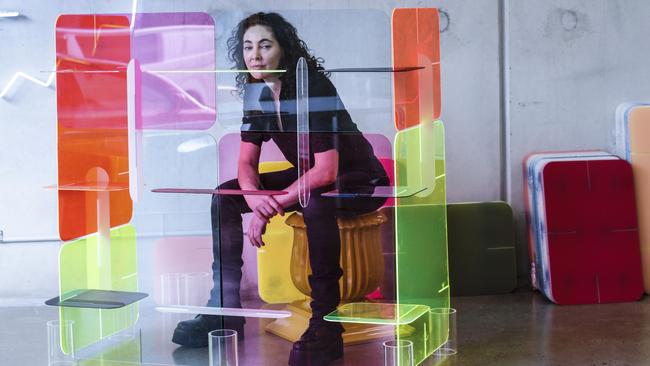
Compact pieces of plastic that can be neatly flat-packed and mailed are a stark departure from the imposing towers where Elenberg honed her art and made her name. Despite her unorthodox entry to university, she graduated with first-class honours in 1998. It was a handy piece of paper but almost irrelevant because by then she’d already set up a much-talked about practice with Fraser and the creative wunderkinds were well on their way to forever changing Melbourne’s skyline.
By 2003 Elenberg was named Telstra Young Business Woman of the Year and two years later she won Ernst & Young’s Southern Region Young Entrepreneur of the Year. After the success of Liberty Tower, Elenberg and Fraser, who married and have three children, partnered with Schwartz on a series of projects including the Docklands residential complex Watergate Tower and the award-winning A’Beckett apartment tower. In fact, if you stand on any corner of Melbourne’s CBD it’s almost impossible not to spot a building with their visionary fingerprints on it.
“It was obvious to me she could do it,” says Morry Schwartz. “It’s a big deal to design a multi-storey building and the critical thing to get right is the design... It was apparent so early that Zavaha had these twin capabilities: a fantastic aesthetic sense and a huge problem-solving capability. That’s what creativity is, the ability to solve problems in the most elegant way.”
But Zahava Elenberg is a rare bird who was never going to be caged. After years of their successful partnership, and a host of iconic developments under the Elenberg Fraser brand, the couple parted ways professionally and personally. Elenberg’s name and spirit still loom large over their practice, but she stepped away to launch Move-in, a ready-to-install furniture company that quickly grew from a boutique business into one of the largest fit-out companies in Australia.
“I realised as she was growing up how creative she was and how significant she was. She is someone who sets the benchmark, the one others watch,” Schwartz says. “She has had a huge influence on the design of Melbourne.”
Renowned designer and architect Kerry Phelan, who has known Elenberg for decades, agrees. “Her legacy lives in every street. She is incredibly talented, she sees things other people don’t see and she sees opportunities others don’t, but she likes to go about things quietly, to fly under the radar. She’s never been one to seek headlines.”
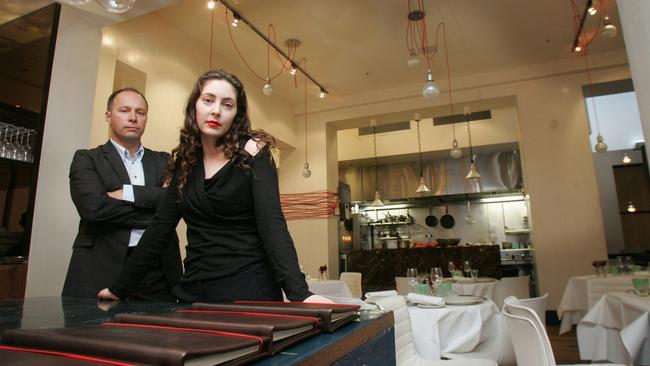
Zahava Elenberg was raised a world away from the lamb-chops-and-three-veg Australia most of us knew in the 1970s. Her childhood memories are of heady days spent in Sydney at the Lavender Bay home of her parents’ closest friends, Brett and Wendy Whiteley. “Brett taught Zahava how to ride a bike,” Wendy recalls. “I remember us all watching her race down the hill and around the corner and then finish with some clever trick. She was always a game little kid, no fear.”
Brett Whiteley and Zahava’s father Joel were best friends, and they and their families created a communal haven on the weed-thickened banks of Sydney Harbour. While the artists whiled away the hours in Brett’s downstairs studio, Zavaha and Whiteley’s daughter Arkie freely explored the bohemian enclave. Neighbours included celebrated artists such as Peter Kingston, Robert Jacks and Tim Storrier; the scent of weed and anarchy greeted arrivals to Lavender Street long before any whiff of its famous fig trees and frangipani.
Zahava recalls an eccentric atmosphere, a time of experimentation, and says there were no boundaries between children and adults: “There was no hierarchy. I was an equal part of my parents’ life. It was a world of ideas and creativity and loud music and food and art and conversation and I was part of it all. There was no speaker I couldn’t sleep under, no two chairs put together in a restaurant I couldn’t sleep on. It was a childhood of adaptability and responsibility and respect.”
In the summer of 1977, the Elenbergs and Whiteleys moved to Italy, where they shared Arthur Boyd’s house in Pisa. Both artistic stars were on the rise. Whiteley had won his first Archibald the year before and Joel Elenberg was fine-tuning his talent for sculpting marble, learning from Italian artisans. One of his most famous works of that era, Mask A 1979, carved in white marble, sold for a record $520,000 in 2018.
In 1980, Joel Elenberg died of cancer. The Whiteleys were by the family’s side in Bali, with Brett sketching a series of intimate images of his best friend’s final days. Wendy comforted Anna through her darkest days, and Anna returned the gesture when Brett died of an overdose in 1992, followed by Arkie’s death from cancer in 2001.
“Zahava is part of my family,” says Wendy Whiteley. “She is a very precious family member to me, a gorgeous woman, so talented. I adore her. She has a beautiful soul about her. She always had a magical streak, like my daughter Arkie. They were both only children, and although Arkie was quite a bit older, she was like a sister to Zavaha.”
After Joel’s death, Anna and Zahava settled back in Melbourne, where Anna established the United Artists Gallery in St Kilda and later her eponymous gallery. Despite the long hours required to build her business and make her name, she and her daughter were inseparable. It’s impossible not to notice striking similarities between them, from the perfect wild curls to the kohl-rimmed, ice-blue eyes.
“They both have an amazing eye for aesthetic detail,” says Morry Schwartz, who married Anna in 1987 when Zavaha was 14 years old. “If I place something on the table and Anna walks into the room, she’ll move it. And it will be right. Zahava is exactly the same. They both have the ability to make things better, to create a world around themselves which is in total harmony.”
Whiteley agrees. “Zahava is a brilliant mother and cook, and a wonderful gardener – we have a love of gardening in common, she’s created a beautiful garden at her home,” she says, adding with affection: “Her mother is not a gardener!”
The self-described “rebellious, wilful and belligerent” teenager was sent to Preshil, a progressive school in Melbourne known for challenging boundaries. It proved life-changing. When an exasperated teacher dragged the troublesome green-haired teenager into principal Margaret Lyttle’s office, Lyttle refused to chastise her. “She said to me, ‘Don’t go back to class for the next six weeks. You’re in charge of the school play, the script, the set and costumes.’ It was a turning point in my life,” Elenberg says. “I loved Preshil. Just loved it. I think it’s the way education should be, it’s a beautiful place, free and democratic, a place where you are totally valued as a human being and you have agency in your own pathways.”
She remained close with Lyttle and visited her often after she’d finished school. When Elenberg won Telstra Young Business Woman of the Year, Lyttle was one of the first people she told. “I was very excited and I said to her, ‘I’ve won this award!’ And she just looked at me and said, ‘What on Earth for?’ I’m sure there were no other principals in the entire universe that would have been so dismissive of a student winning an award, but to her there was no value in it. What mattered was what was in you as a person, your values, your creativity and your passion. The award meant little.” Elenberg’s children Lilith, 19, Boaz, 16, and Hephzibah, 11, are Preshil students too.
Today, Anna and Zahava live across from one another in the same Carlton street and speak with each other at least once a day. “My mother didn’t need to anaesthetise her life to accommodate a child,” Elenberg says. “I was part of her everyday world and treated equally. I was always part of an interesting, vibrant, adult normal life. I was raised with the belief that ideas matter, and questions matter. Sometimes more than the answers. I’m trying to raise my children the same way.
“Mum is a doer – she gets on with life and just does – and I learnt from watching her. We’ve had a 47-year-long conversation with no beginning and no end. It’s lovely. I learnt how to work hard from watching my mother. I was exposed from a very early age to what is required to be someone, to make a difference, to be successful.”
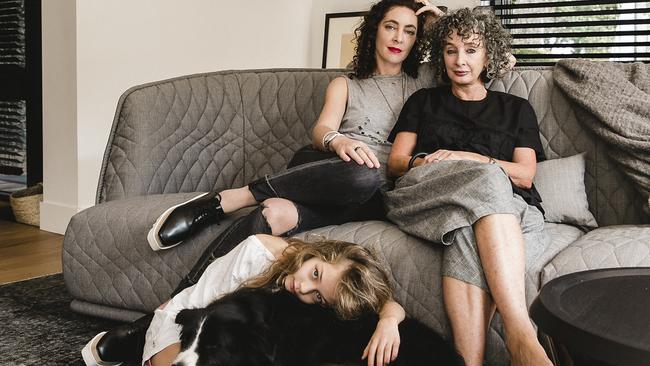
Which brings us back to Clikclax. Earlier this year, before Covid struck, Elenberg was reminiscing about childhood afternoons spent at her grandparents’ bayside home in Beaumaris. One of her favourite toys was Playplax, a set of bright coloured plastic pieces that slotted together to create interesting shapes and structures. Whether it was a moment of childhood whimsy or an acute sense that something in the world was shifting, Elenberg decided to find a set of the rare cult-classic toy. She scoured the internet, tracking down two boxes, one in New York and one in London. Within weeks they were sitting on the desk of her studio in Fitzroy, waiting for their moment. “I took them home and was playing around with them, slotting them together and making shapes. That was when the idea for Clikclax hit.” It’s a nod to Playplax and a more carefree era, and she hopes the collection will help us recreate a sense of safety and freedom.
She believes the pandemic will have a very direct influence on our cities of the future: how we live, how we work and how we feel. “It will have huge implications on the way we design things... For a start, we are more physically aware of one another. I’ve always been an avid believer in rooms. We lost rooms with the move towards open-plan living, we lost the idea of privacy and secrecy and sometimes it’s nice to be closed in, it’s comforting. I think maybe there’s an opportunity to rethink our sense of privacy and how we occupy space. We want more privacy, more intimacy around the way we live and work.
“Covid-19 has been a great leveller. People are much more flexible and dexterous in their thinking now, and that’s a good thing. Everyone is working from home, everyone has to communicate in the same way, it’s a lesson in democracy. And even if we snap back to our old lives, a residue of Covid will always exist.”
